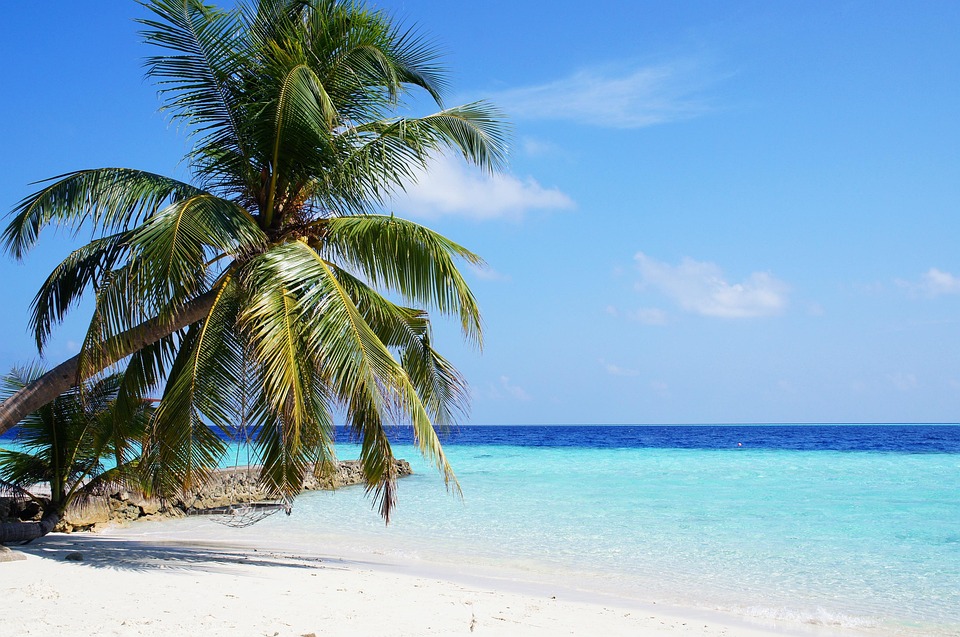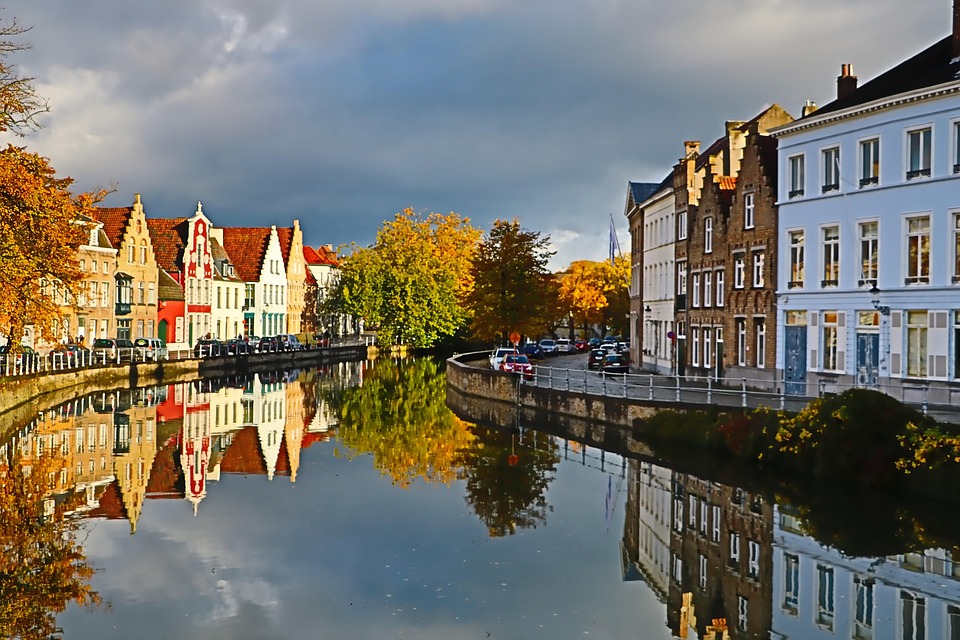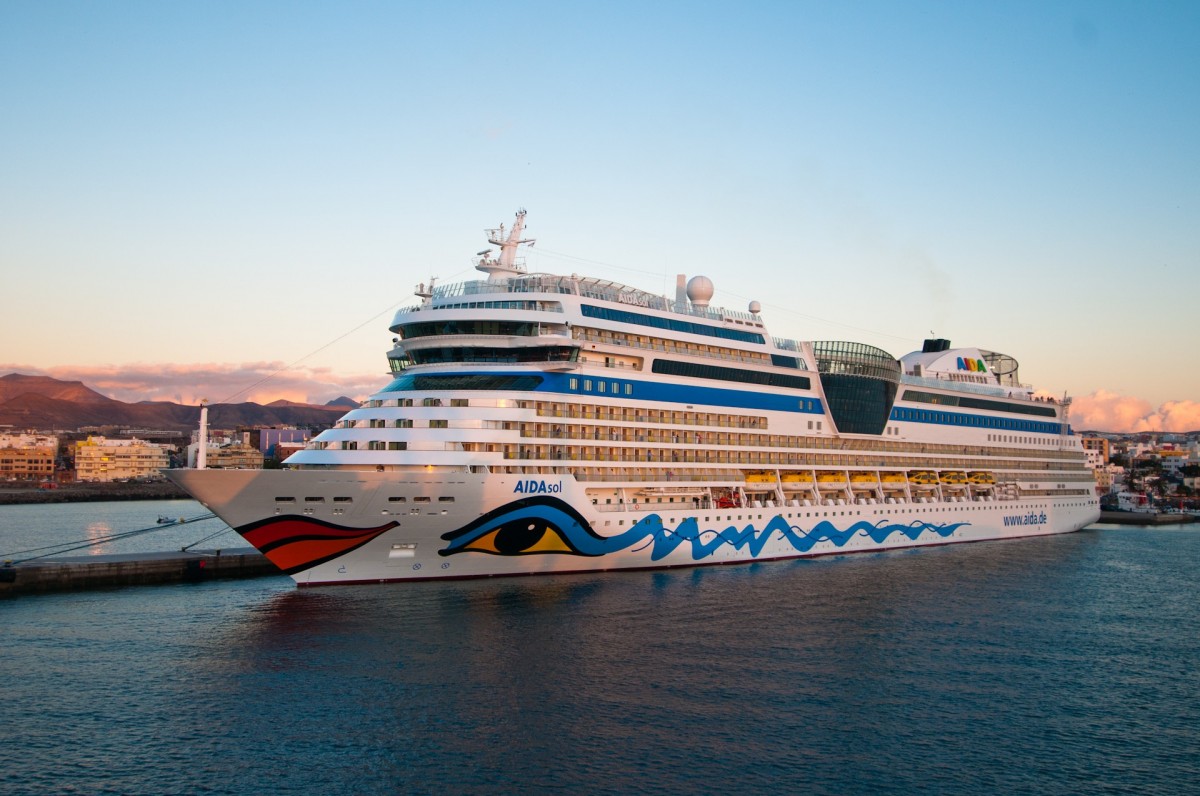Embark on a transformative journey with “How to Travel Slowly to Maximize Your Experience.” This guide unveils the art of slowing down to truly appreciate the richness of your travels. Forget the frenetic pace of typical tourism; instead, discover a profound connection with destinations through immersion and mindful exploration.
This comprehensive guide delves into the principles of slow travel, from careful planning and cultural immersion to sustainable practices and overcoming potential challenges. Learn how to craft an itinerary that prioritizes experiences over ticking off attractions, allowing you to savor the journey and connect with the authentic spirit of each place you visit.
Defining Slow Travel

Slow travel is a conscious approach to exploring destinations, prioritizing immersive experiences over rapid transit and superficial sightseeing. It emphasizes connection with the local culture, understanding the environment, and fostering a deeper appreciation for the journey itself. This contrasts sharply with the often frenetic pace of typical tourism, which frequently prioritizes ticking off attractions and moving from one location to another as quickly as possible.Slow travel fosters a richer understanding of a place by encouraging travelers to spend more time in a destination, engaging with local communities, and experiencing the nuances of everyday life.
This approach encourages personal growth and meaningful connections, both with the destination and with oneself.
Distinguishing Slow Travel from Other Travel Styles
Slow travel is distinct from other travel styles, each with its own unique characteristics and motivations. While backpacking often emphasizes budget-conscious travel and a focus on experiencing a variety of locations, slow travel emphasizes a slower pace and a deeper immersion. Luxury vacations, on the other hand, often prioritize comfort and amenities, sometimes at the expense of authentic cultural immersion.
Slow travel seeks a balance between these extremes.
Core Principles of Slow Travel
Slow travel is fundamentally about appreciating the journey, not just the destination. It prioritizes experiencing a place authentically, connecting with local communities, and embracing the unexpected. The core principles underpinning this approach include:
- Immersion: Slow travelers prioritize experiencing the local culture firsthand, engaging with local people, and participating in local activities.
- Sustainability: Slow travel emphasizes minimizing the environmental impact of travel by choosing eco-friendly accommodations, supporting local businesses, and reducing consumption.
- Reflection: Slow travel encourages travelers to pause and reflect on their experiences, fostering a deeper understanding of themselves and the world around them.
- Flexibility: Slow travelers embrace the unexpected and are open to adjusting their plans based on opportunities and encounters.
Comparison of Fast and Slow Travel
The following table highlights the key differences between fast-paced tourism and the slow travel approach.
| Characteristic | Fast Travel | Slow Travel |
|---|---|---|
| Speed | High; focused on rapid movement between locations. | Low; emphasizes spending more time in each location. |
| Duration | Short trips, often weekend getaways or shorter vacations. | Longer trips, potentially lasting weeks or months. |
| Focus | Ticking off attractions, maximizing sightseeing. | Experiencing local culture, building connections, and understanding the environment. |
| Budget | Can vary; can be budget-conscious or high-end depending on the trip. | Often budget-conscious, but the emphasis is on the experience rather than the cost. |
| Impact | Potentially higher environmental impact due to rapid movement and consumption. | Generally lower environmental impact due to slower pace and focus on sustainability. |
Planning for Slow Travel

Thorough planning is crucial for a fulfilling slow travel experience. It’s not about rigid itineraries, but rather a framework that allows for spontaneity and deep engagement with destinations. A well-structured plan helps you avoid rushed experiences and maximize your time to truly connect with the local culture and environment. It also ensures you allocate resources effectively and enjoy the journey without undue stress.Effective planning goes beyond simply booking flights and accommodations.
It involves a proactive approach to understanding your destination and how to best experience it at a slower pace. This involves careful consideration of your interests, budget, and desired level of interaction with the local community.
Importance of Thorough Planning
Thorough planning is essential to mitigate the potential for disappointment and stress. It allows you to anticipate potential challenges and develop contingency plans. A well-defined plan empowers you to make informed decisions, prioritize experiences, and allocate your time effectively, leading to a richer and more memorable travel experience.
Creating a Slow Travel Itinerary
A slow travel itinerary is not a rigid schedule. Instead, it acts as a roadmap to guide your exploration, focusing on key destinations and activities while allowing flexibility for unexpected discoveries. Here’s a step-by-step process:
- Define your interests and values: What aspects of travel resonate with you? What type of experiences are you seeking? Consider your cultural interests, culinary preferences, and desired level of physical activity.
- Research potential destinations: Go beyond tourist traps. Explore local markets, historical sites, community events, and hidden gems. Look for unique experiences that reflect the local culture, rather than just the popular tourist attractions.
- Establish a realistic budget: Calculate the estimated costs of flights, accommodation, activities, and food. Identify cost-effective options, such as budget-friendly accommodation and transportation, and factor in potential unforeseen expenses.
- Create a flexible framework: Artikel key destinations and activities, but leave room for spontaneity. Build in buffer days to adjust to unforeseen circumstances or unexpected opportunities.
- Book accommodations and transportation in advance: Secure essential components of your itinerary. However, leave room for flexibility in your schedule to accommodate unexpected events or changes of plans.
- Consider local customs and traditions: Research the local customs and traditions of the destinations you plan to visit. Learn a few basic phrases in the local language to show respect for the local culture.
- Build in downtime: Schedule time for relaxation and reflection. This is crucial for a slow travel experience to allow you to fully absorb and process the experiences you’re having.
Researching Beyond Tourist Attractions
Going beyond typical tourist attractions allows for a deeper understanding and appreciation of the destination. By venturing into local markets, attending community events, and engaging with local artisans, you can gain a more authentic understanding of the place and its people. This immersion offers a more enriching experience compared to the superficial view often presented by standard tourist activities.
Flexibility and Spontaneity
Flexibility is paramount for a slow travel experience. While planning is important, allowing for spontaneity and unexpected detours is essential. This approach can lead to discovering hidden gems, meeting interesting people, and experiencing unforeseen adventures.
Budgeting for Slow Travel
Budgeting for a slow travel journey requires careful consideration of all expenses. Finding cost-effective accommodation and transportation is key. Options like hostels, guesthouses, and Airbnb can provide affordable lodging, while utilizing public transport, cycling, or walking can significantly reduce transportation costs. Similarly, eating at local eateries and markets often offers more affordable and authentic culinary experiences. Be sure to account for unforeseen expenses.
Consider creating a detailed budget, listing all expected costs, and factor in a contingency amount.
Choosing Destinations Aligned with Interests
Choosing destinations aligned with your interests and values is essential for a satisfying slow travel experience. If you are passionate about history, consider destinations with rich historical significance. If you enjoy nature, opt for destinations with stunning natural landscapes. Consider destinations that match your values, such as those that prioritize sustainability or community engagement. Selecting destinations that align with your passions will significantly enhance your travel experience.
Embracing Local Experiences
Slow travel is more than just seeing sights; it’s about experiencing the heart of a place. Immersion in local culture is paramount to a truly enriching journey. By connecting with the community, understanding their traditions, and seeking authentic experiences beyond the tourist trail, travelers gain a deeper appreciation for the destination and its people. This engagement fosters respect, understanding, and lasting memories.Understanding and interacting with local communities is key to a fulfilling slow travel experience.
It goes beyond simply observing a place; it involves active participation and genuine engagement. This fosters a deeper appreciation for the destination and its people. By stepping outside of the typical tourist path, travelers gain unique insights and build meaningful connections.
Importance of Immersing in Local Culture
Connecting with the local community and understanding their customs and traditions is essential to appreciating the true essence of a destination. This immersion offers a more profound and authentic experience than simply visiting tourist attractions. By engaging with the locals, travelers gain a firsthand understanding of the culture, beliefs, and values that shape the place. This enriches the journey and fosters respect and understanding.
Strategies for Interacting with Local Communities
Engaging with local communities requires proactive strategies. Participating in local events, festivals, and markets provides opportunities to observe traditions firsthand and interact with people. Visiting local shops and workshops, engaging in conversations with shopkeepers, and taking cooking classes are excellent ways to connect with the local culture. Seeking out local guides and participating in community-based tours can also provide valuable insights.
Finding Authentic Local Experiences
Authentic experiences are crucial to slow travel. Seeking out recommendations from locals, exploring less-visited neighborhoods, and venturing beyond the typical tourist routes are key. Participating in community-based initiatives, supporting local businesses, and engaging in hands-on activities are essential to finding genuine experiences. Booking accommodations with local hosts or staying in guesthouses or homestays can further immerse you in the local environment.
Examples of Cultural Exchange and Understanding
Several activities promote cultural exchange and understanding. Learning a few basic phrases in the local language demonstrates respect and fosters interaction. Participating in cooking classes, attending local festivals, or joining community-based tours offer insights into local traditions. Visiting local markets and engaging with artisans provides opportunities to learn about local crafts and traditions. Volunteering with local organizations or participating in community projects allows for deeper interaction and shared experiences.
Questions to Ask Locals for Deeper Insights
Asking relevant questions demonstrates respect for the local culture. Instead of seeking superficial answers, travelers should ask about local traditions, history, customs, and daily life. Asking about local perspectives on significant events, challenges, and opportunities can provide a rich understanding of the community. Inquiring about local legends, stories, and anecdotes provides insight into the culture’s values and beliefs.
For example, asking about traditional celebrations or significant historical events can provide context and a more profound appreciation of the culture.
Respecting Local Customs and Traditions
Respecting local customs and traditions is paramount. Learning about local etiquette and dress codes demonstrates consideration for the local community. Understanding and adhering to religious practices and social norms is crucial. Being mindful of local sensitivities and avoiding actions that could be considered disrespectful is important. Showing respect for local customs ensures a positive and enriching experience for everyone.
Sustainable Slow Travel Practices

Embarking on a journey that prioritizes mindful travel requires understanding the environmental and social impact of our choices. Slow travel, by its very nature, fosters a deeper connection with destinations and promotes a more sustainable approach to tourism. This section will explore eco-friendly transportation options, strategies for minimizing your environmental footprint, and responsible accommodation and dining choices. It also highlights the crucial role of supporting local businesses in fostering a more equitable and enriching travel experience.Sustainable tourism aims to minimize negative impacts on the environment and local communities while maximizing positive contributions.
Slow travel, with its emphasis on immersion and appreciation, inherently aligns with these principles. It encourages travellers to slow down, engage with local cultures, and support local businesses, thereby creating a more positive and lasting impact.
Environmental Impacts of Different Travel Styles
Different travel styles have varying impacts on the environment. High-speed travel, with its reliance on fossil fuel-powered vehicles, contributes significantly to carbon emissions and air pollution. Conversely, slow travel, often incorporating eco-friendly transportation methods, can considerably reduce these impacts. Sustainable tourism practices aim to lessen the environmental footprint and enhance the overall well-being of local communities.
Eco-Friendly Transportation for Slow Travel
Slow travel encourages the use of eco-friendly transportation methods. Cycling, walking, and utilizing public transport are excellent alternatives to private vehicles. These methods significantly reduce carbon emissions and offer unique opportunities to experience the destination’s character at a slower pace. For instance, cycling through scenic countryside routes can provide a deeper appreciation for the environment while minimizing pollution.
Public transportation, like trains and buses, offers a cost-effective and environmentally conscious means of travel, enabling exploration of multiple destinations in a single trip.
Reducing Your Environmental Footprint
Minimizing your environmental impact during a slow travel journey involves several key strategies. Packing reusable water bottles and food containers reduces single-use plastic waste. Choosing locally sourced food whenever possible supports local farmers and reduces transportation-related emissions. Respecting local ecosystems and avoiding activities that could harm wildlife or natural habitats are crucial elements of responsible travel. Avoiding unnecessary purchases, and choosing accommodations and services with environmental certifications, also helps lessen the environmental footprint.
Sustainable Accommodation Options
Sustainable accommodations are increasingly available, providing eco-friendly alternatives to traditional hotels. Eco-lodges, guesthouses, and farm stays often prioritize local materials, renewable energy, and waste reduction. These establishments often contribute to local economies and offer a unique cultural experience. For example, choosing a guesthouse that uses solar power demonstrates a commitment to environmental sustainability.
Sustainable Dining Practices
Sustainable dining practices support local businesses and promote environmental responsibility. Choosing restaurants that source food locally and support local farmers is a crucial aspect of slow travel. Reducing food waste by ordering only what is needed and embracing vegetarian or vegan options, when appropriate, further minimizes your impact. Moreover, supporting local food vendors and markets can be a rewarding way to experience the local culture and taste authentic cuisine.
Supporting Local Businesses and Artisans
Supporting local businesses and artisans is an integral part of sustainable slow travel. Buying handcrafted goods from local artisans directly supports their livelihoods and contributes to the local economy. Patronizing locally owned restaurants, cafes, and shops helps to keep these enterprises thriving. Such direct support ensures that the benefits of tourism are distributed fairly and contribute to a more equitable and enriching experience for all involved.
Visiting local markets and engaging with local artisans can offer unique insights into the culture and traditions of a destination.
Slow Travel Activities and Experiences
Embarking on a slow travel journey is not merely about destination; it’s about the enriching experiences along the way. This involves immersing yourself in the local culture, engaging with the community, and savoring the journey’s details. It’s about slowing down to appreciate the beauty and depth of a place. By engaging in local activities, you gain a richer understanding and create lasting memories.Engaging with local communities and participating in local activities are essential elements of slow travel.
These interactions foster a deeper connection with the destination, offering valuable insights and opportunities for personal growth. By actively participating in the local scene, travelers can experience a place in a more meaningful way, far beyond a fleeting tourist visit.
Local Workshops, Classes, and Events
Participating in local workshops, classes, or events provides a unique opportunity to connect with the destination’s culture and gain practical skills. Learning a local craft, cooking a traditional dish, or attending a cultural performance can lead to a deeper understanding of the local way of life. These activities often involve direct interaction with locals, facilitating invaluable learning and creating lasting memories.
For instance, a pottery workshop in a rural village allows you to learn the art while interacting with the artisans, understanding their techniques, and appreciating their dedication. Similarly, attending a traditional music performance offers an immersive cultural experience.
Immersive Activities
Immersive activities are key to truly experiencing a destination. These activities are designed to take you beyond the typical tourist sights and delve into the heart of a place. A homestay experience, for example, allows you to live like a local, experiencing daily life and interacting with the community. This kind of experience fosters a profound understanding of the destination’s culture, values, and traditions.
Other immersive activities include visiting local markets, participating in a guided nature walk led by a local expert, or attending a community festival. These activities provide invaluable insights into the local way of life, allowing you to experience the destination in a holistic manner.
Meaningful Conversations with Locals
Meaningful conversations with locals are a vital part of slow travel. These conversations provide insights into the destination’s history, culture, and current affairs, often offering unique perspectives that are not readily available through other means. Asking questions about local traditions, customs, and challenges fosters mutual understanding and respect. By engaging in open dialogue, travelers can gain a richer appreciation for the local community and its experiences.
These conversations offer a personal touch and a connection that goes beyond superficial encounters.
Outdoor Activities for a Slower Pace
Outdoor activities offer a slower pace, allowing for greater appreciation of nature. Hiking, kayaking, or simply taking a leisurely walk through a local park or forest are excellent examples of activities that allow you to experience the destination at your own pace. Such activities often lead to profound experiences, fostering a sense of calm and connection with the environment.
This slower approach encourages mindfulness and appreciation of the natural beauty surrounding you. For example, a guided nature walk can highlight local flora and fauna, provide ecological insights, and showcase the region’s unique natural wonders.
Savoring the Journey
Taking your time to savor the journey is crucial to slow travel. This involves allowing yourself to be present in each moment, appreciating the small details and subtle changes in the environment. It means allowing yourself to be fully immersed in the experience, without rushing from one activity to the next. By slowing down, you allow yourself to truly absorb the essence of the destination and the journey itself.
This approach creates a more fulfilling and memorable travel experience. Enjoy the journey, embrace the unexpected detours, and appreciate the unique beauty of each moment.
Tools and Resources for Slow Travel

Embarking on a slow travel journey requires careful planning and access to reliable resources. This section Artikels essential tools and resources that can enhance your experience, from researching local customs to booking accommodations that align with your principles. These tools empower you to truly immerse yourself in the destination, maximizing your enjoyment and minimizing your environmental impact.Understanding the available resources can be instrumental in crafting a memorable and authentic slow travel experience.
By utilizing diverse platforms and information sources, you can discover hidden gems, connect with local communities, and truly appreciate the cultural nuances of your chosen destination.
Websites and Apps for Planning
Numerous websites and apps offer valuable tools for researching destinations, booking accommodations, and planning transportation. These resources can assist you in creating a smooth and well-informed itinerary.
- Travel blogs and websites: Many travel blogs and websites specialize in slow travel, providing detailed insights into destinations and cultural experiences. They often feature recommendations for unique accommodations, local restaurants, and activities. Examples include “The Nomadic Matt,” “Wanderlust,” and “Travelfish.” These resources offer a wealth of information, ranging from historical context to current events and local practices.
- Accommodation booking platforms: While major platforms like Booking.com and Airbnb offer a wide range of options, consider exploring niche platforms specializing in boutique hotels, homestays, or eco-lodges. These platforms often cater to slow travel enthusiasts by highlighting sustainable practices and local partnerships.
- Transportation apps: Ride-sharing services and public transportation apps are essential for navigating unfamiliar cities and regions. Utilizing these resources can help you discover hidden local routes and minimize your carbon footprint. Consider using apps like BlaBlaCar for intercity travel, or Citymapper for efficient navigation within cities.
Researching Local Customs and Traditions
Gaining a deeper understanding of local customs and traditions is vital for respectful and meaningful interactions. Thorough research ensures you can participate in cultural activities appropriately.
- Cultural guides and books: Books and websites dedicated to specific regions offer detailed information on local customs, traditions, and etiquette. These resources often highlight essential cultural norms and offer practical tips for navigating social situations.
- Local community websites: Look for local websites or forums that can offer authentic perspectives and insights. These resources might provide valuable insights into local traditions and customs. Check local government websites for cultural information and events.
- Embassy websites: Embassy websites often provide valuable information about local laws, customs, and safety protocols. Be sure to research visa requirements and any necessary travel documents.
Booking Accommodation and Transportation
Choosing accommodations and transportation that align with slow travel principles ensures a more immersive and sustainable experience.
- Sustainable tourism platforms: Websites focused on sustainable tourism offer listings of eco-lodges, homestays, and other accommodations committed to environmental responsibility. This approach ensures you contribute to responsible tourism.
- Local tour operators: Local tour operators often provide more authentic and tailored experiences, promoting interactions with local communities. This can often result in more personal interactions with local communities and cultural insights.
- Public transportation: Prioritizing public transportation over private vehicles helps reduce your carbon footprint and immerse yourself in the local environment. Research public transportation systems in advance to plan your travel effectively.
Connecting with Local Communities and Finding Unique Experiences
Connecting with local communities and participating in unique experiences are key elements of slow travel.
- Local community forums and social media groups: These platforms can provide valuable connections with locals who can offer personalized recommendations for unique experiences. Engage with local communities and discover hidden gems.
- Local event listings: Explore local event listings, festivals, and workshops to uncover cultural events and activities. These opportunities offer valuable insights into local traditions and customs.
- Volunteer opportunities: Many organizations offer volunteer opportunities that allow you to connect with local communities and contribute to their efforts. These opportunities provide valuable cultural exchange and understanding.
Table of Online Resources
This table summarizes various online resources for planning and executing a slow travel trip.
| Website/App | Feature 1 | Feature 2 | Target Audience |
|---|---|---|---|
| Booking.com | Wide range of accommodation options | User-friendly interface | General travelers |
| G Adventures | Sustainable travel tours | Focus on cultural immersion | Slow travelers, nature enthusiasts |
| Lonely Planet | Detailed destination guides | Cultural insights | Independent travelers, adventure seekers |
| BlaBlaCar | Carpooling service | Cost-effective transportation | Budget-conscious travelers |
| Citymapper | Public transportation information | Real-time updates | Urban explorers |
Overcoming Challenges in Slow Travel
Embarking on a slow travel journey promises enriching experiences, but unexpected hurdles are inevitable. Adaptability and a proactive approach are crucial to navigating these challenges and ensuring a smooth and fulfilling trip. Understanding potential difficulties and having strategies in place to address them will help you embrace the journey’s unpredictable nature and maximize your enjoyment.Navigating unforeseen circumstances and maintaining a positive outlook are key elements in successfully executing a slow travel plan.
This involves preparing for potential setbacks and developing coping mechanisms to manage stress and maintain a sense of calm throughout the experience. Flexibility and adaptability are essential traits for successfully navigating the unexpected twists and turns that often accompany this style of travel.
Identifying Common Challenges
Slow travel, while rewarding, often presents challenges that differ from traditional, fast-paced travel. Common issues include time constraints, unexpected delays, logistical problems, and adapting to new environments. These can lead to stress and frustration if not addressed proactively. Recognizing these common hurdles is the first step toward developing effective solutions.
Strategies for Overcoming Challenges
A proactive approach to potential problems is essential for a successful slow travel experience. Flexibility and adaptability are vital.
- Time Constraints: While slow travel prioritizes immersion, unexpected delays or longer-than-anticipated travel times are inevitable. Build buffer time into your itinerary to account for potential delays. Consider utilizing public transportation or alternative methods that may offer flexibility. Adjusting the duration of your stay in specific locations, or even the destinations themselves, allows for the incorporation of spontaneous experiences.
- Unexpected Delays: Travel disruptions, from flight cancellations to unforeseen road closures, are a part of any journey. Having alternative travel plans, or a backup itinerary, can significantly ease the impact of unexpected delays. Remaining calm and flexible will help you adjust your plans seamlessly. For example, if a flight is canceled, consider alternative routes, hotels, or activities.
- Logistical Problems: Booking accommodations, arranging transportation, or accessing local services can present logistical hurdles. Research and pre-booking, while helpful, don’t eliminate the possibility of issues. Contact local authorities or tourism offices to clarify potential issues in advance, and have local emergency contact numbers or local guides available. Be prepared to adjust your plans, and have backup options in place for any potential difficulties.
- Adapting to New Environments: Slow travel often involves interacting with new cultures and environments. Being open-minded and respectful of local customs is crucial. Learning a few basic phrases in the local language, or having a language translation app handy, can be beneficial.
Managing Stress and Maintaining a Positive Attitude
Maintaining a positive mindset is critical for a fulfilling slow travel experience. Acknowledge that challenges are part of the journey and focus on the opportunities for growth and discovery.
- Mindfulness and Relaxation Techniques: Practicing mindfulness, meditation, or deep breathing exercises can help manage stress during unexpected situations. These techniques can help you stay grounded and calm in challenging moments. For example, taking a few minutes to practice meditation in a quiet park can help reduce stress related to unexpected delays.
- Embracing the Unexpected: View unexpected events as opportunities for new experiences. A delayed flight might lead to discovering a hidden gem along the way. An alternative accommodation might offer a unique cultural perspective.
Adjusting Plans When Unexpected Situations Arise
Flexibility is key to navigating unforeseen circumstances in slow travel. Develop the ability to adapt your plans on the fly.
- Alternative Activities: If a planned activity is canceled or unavailable, be open to exploring alternative options. Local markets, museums, or parks are always great alternatives. Talk to locals for recommendations on off-the-beaten-path experiences.
- Accommodation Changes: If your initial accommodation choice presents issues, be ready to switch to a nearby option. Local guesthouses or homestays can offer a unique experience.
Dealing with Potential Logistical Problems
Preparation is key to addressing potential logistical difficulties. Pre-booking and research are important, but a flexible attitude will help you navigate unforeseen challenges.
- Backup Options: Having alternative transportation, accommodation, or activity plans can prevent frustration in case of unexpected problems. Have multiple options in place to accommodate different scenarios.
- Emergency Contacts: Keep important contact information readily available, including local emergency numbers, travel insurance details, and contact information for your accommodation and transportation providers. Pre-download necessary apps or offline maps.
Conclusion

In conclusion, slow travel offers a unique opportunity to deepen your connection with the world. By meticulously planning your itinerary, embracing local experiences, and adopting sustainable practices, you can transform your travel into a truly enriching and memorable adventure. This guide provides the tools and insights to make your next journey one of profound discovery and lasting fulfillment.